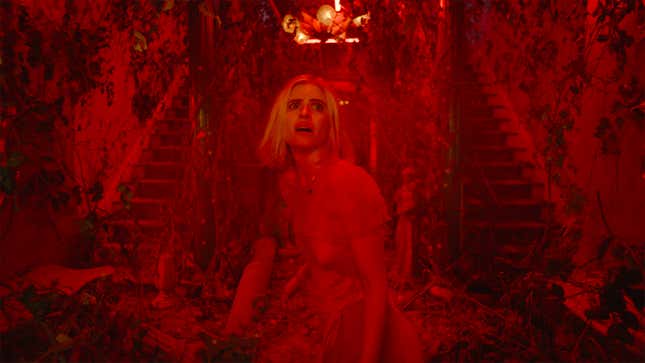A Humanistic Movie About Porn, a Queer Refugee Story, and Other Gems From the Sundance Film Festival
EntertainmentMovies

As it sometimes goes in a pandemic, for this year’s Sundance Film Festival, something lost meant something gained. What was lost was obvious: The ability to be in Park City, Utah, in person; the parties; the vibe; the communal audience experience. What was gained was glorious: The ability to watch a highly curated selection of world-premiere movies from the comfort of one’s home, as the festival moved to its own temporary streaming platform. I watched about a dozen of Sundance movies from my bed this year and I loved it. No lines. No anxiety about proper scheduling. No walkout shame if I realized a movie wasn’t for me and decided to stop watching. I loved it.
At its core, Sundance retained the metaphor-for-life nature of all festivals: the pressure to cram so much in (even easier to get more movies in when you don’t have to worry about any sort of traveling from theater to theater), the time constraints, the remorse you feel when you spend time on something that you don’t connect with when you could have selected something that you did, the very I-could-have-been-doing-that-instead-ness of it all. In some ways, in fact, this year’s Sundance program faced its toughest competition yet: The dozens of other things around the house that could occupy one’s time instead.
Happily, I found plenty that I thought deserved my attention. Below are some capsule reviews of movies that I loved or found otherwise notable. (Not included is Judas and the Black Messiah, which I watched via Warner Bros., and don’t consider part of my Sundance viewing. It’s great, though. Its director Shaka King is one of my favorite interviews that I’ve ever conducted and I love how masterfully he has assumed the role of director of an epic of such a scale after doing much smaller indies.)
Pleasure
Astonishingly audacious and astoundingly responsible, Pleasure is Swedish director Ninja Thyberg’s first feature, Pleasure. In a serendipitous (or is it shrewd?) move, first-time actor Sofia Kappel plays Bella Cherry, who arrives in California from Sweden to break into porn. Bella’s ambition is palpable, but her motivation is unclear and that’s by design—in a post-screening Q&A, Thyberg said she wanted to avoid the trap of effectively asking, “What’s wrong with her?,” regarding her character’s career choice. Bella repeatedly claims that she’s doing porn because she loves dick, which is at least plausible and fair enough. Pleasure is routinely explicit (I lost count of the number of erections onscreen) and frequently brutal—an indelible scene features her being degraded by two men on screen in a “rough” scene that ends in tears and her describing the situation as rape. The way that the men flip from abusive to sensitive when she asks for a break in filming is unnerving, and the way that Pleasure explains how a human being could put herself in such a situation is masterful. To progress in the industry, Bella is told, requires endurance and a willingness to engage in the extreme. The very act of humanity—arriving and departing the set—is necessarily missing from violent porn scenes as they are presented to their audience, and Pleasure is revelatory for contextualizing while refusing to psychoanalyze. Later Bella uses the coercive techniques she picks up on the set with a female co-star, her roomate Joy (Revika Anne Reustle, who is every bit as magnetic as Kappel, a total natural, and at times an explosive force of rage). Pleasure makes a subtle but undeniable point about patriarchy’s ripple effect and how power in capitalism almost certainly involves the subjugation of others. Thyberg said she filled her crew (both behind and in front of the camera) with veterans of the industry, and that she hopes Pleasure does well by people in porn. What she has created, though, is such a difficult, unflinching watch that Pleasure constitutes the toughest of tough love letters.
-

-

-

-

-

-

-

-

-

-

-

-

-

-

-

-

-

-

-

-

-

-

-

-

-

-

-

-

-

-

-

-

-

-

-

-

-

-

-

-









































